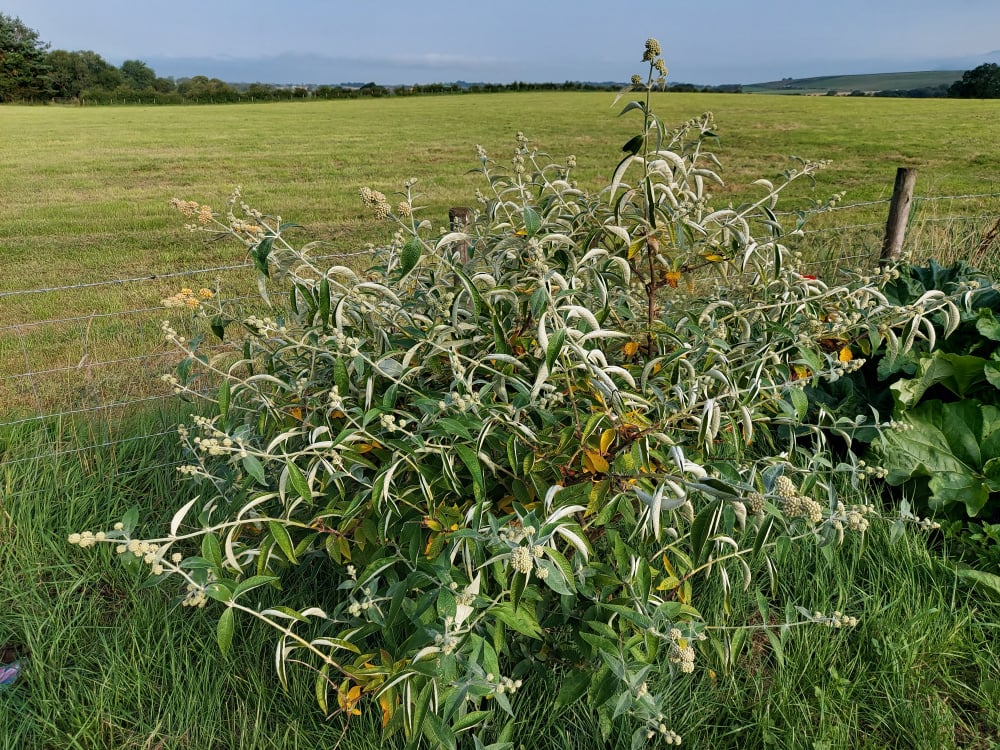With their gracefully arching branches covered in flower spikes, butterfly bushes (Buddleia spp.) are stars of the late summer garden. But if your butterfly bush leaves are looking yellow and lackluster instead of green and vibrant, something is wrong.
There are several potential causes for butterfly bushes to develop yellowing leaves. By understanding the most common reasons and correcting any underlying issues, you can get your plant back to peak health.
In this article, we’ll cover:
- The top causes of yellow leaves on butterfly bushes
- Cultural problems like overly wet or dry soil
- Diseases and pests that can affect foliage
- Environmental factors including sun, heat, and herbicide injury
- How to diagnose and treat yellowing butterfly bush leaves
- When to take more drastic measures like pruning or replacing the plant
Follow these troubleshooting tips and your butterfly bush’s leaves will be green again in no time!
Common Causes of Yellow Leaves on Butterfly Bushes
Here are the most likely reasons for a butterfly bush to have yellow, faded looking leaves:
- Overly wet soil leading to root rot
- Drought stress and underwatering
- Nutrient deficiencies in poor or acidic soil
- Spider mites or other sap-sucking insects
- Herbicide damage from drift or misapplication
- Disease problems like downy mildew
- Excess sun scalding the leaves
- Normal fall leaf color change (deciduous types)
Figuring out the trigger will guide you toward the right fixes,
How to Diagnose and Treat Yellow Butterfly Bush Leaves
Start investigating yellow foliage on your butterfly bush by looking for clues:
-
Check if leaf yellowing is only on part of the plant, which may indicate pest or disease problems.
-
Look for webbing, insects, or spots on the undersides of leaves signaling pests or disease.
-
Consider if any cultural factors like recent fertilizing, pruning, or soil changes have occurred.
-
Rule out herbicide damage if yellowing is worst on outer parts of the plant.
Then take corrective action based on the likely cause:
-
Improve drainage in overly soggy soil.
-
Apply a balanced fertilizer if nutrients are deficient.
-
Treat with horticultural soap or neem oil for sucking insect pests.
-
Prune off affected parts to control/prevent spreading diseases.
-
Provide afternoon shade if sun is too intense.
-
Mulch and water thoroughly if drought stressed.
-
Test and amend soil pH if too acidic.
-
Be patient if yellowing is part of autumn leaf color change!
When to Take More Drastic Measures for Butterfly Bush Problems
If your butterfly bush has extensive yellowing foliar damage that doesn’t respond to basic fixes, more major action may be needed:
-
Severely prune back damaged parts in early spring to stimulate new growth.
-
Remove badly affected plants entirely and replace if damage is beyond recovery.
-
Consider trying a new variety better suited to your growing conditions.
While no plant is totally immune to problems, butterfly bushes are typically quite resilient. A little TLC when you spot issues will get your plant looking lush and green again.
Your Butterfly Bush Foliage Questions Answered
Still have questions about yellow leaves on your butterfly bush? Here are answers to some frequently asked questions:
What does too much water do to butterfly bushes?
Excess moisture around the roots can cause rot and leaves to turn yellow and wilt. Improve drainage and avoid overwatering.
Do butterfly bushes need full sun?
Butterfly bushes thrive in full sun but may need afternoon shade in hot climates to prevent leaf scorching.
Should I cut back my butterfly bush in fall?
It’s best to prune butterfly bushes in late winter or early spring before new growth emerges. But you can do light shaping in fall after flowering ends.
How long do butterfly bushes live?
With proper care, butterfly bush lifespan is typically 8 to 15 years or longer. Some varieties are short lived at just 3 to 5 years.
Should I fertilize my butterfly bush?
Fertilizing yearly in spring with a balanced 10-10-10 fertilizer is sufficient nutrition for butterfly bushes. Avoid high nitrogen formulas.
Spotting and quickly correcting yellow butterfly bush leaves ensures your plant keeps growing strongly. Pay close attention for signs of stress and you’ll be rewarded with vibrant flowers on healthy, green foliage.
How To Solve The Mystery of Virus-Like Yellow-Green Spots on Buddleia Leaves (Aphids)
Why are my butterfly bushes turning yellow?
Here are some common causes: Butterfly bushes require full sun to thrive. If they are not receiving enough sunlight, the leaves may turn yellow. Excessive watering can lead to root rot and nutrient deficiencies, causing the leaves to yellow. Insufficient watering can result in drought stress, causing the leaves to turn yellow and wilt.
Why is pus green or brownish yellow?
Pus is a thick, opaque fluid that oozes out from the wound, and is formed from dead white blood cells, debris, and antibodies that fight against the infection. Usually, it will be white or light yellowish. Green discoloration of the pus indicates an infection from Pseudomonas bacterial infection. The brown discoloration is seen in liver infection or collection of dead neutrophils in the pus. Yellow discoloration suggests infection from staphylococcus bacterial infection. The color of the pus would indicate the type of infection and thus help in starting the appropriate treatment.
Why is my Butterfly bush turning brown?
You may also notice brown tips on many of the leaves. When watering your Butterfly Bush, you may find that the liquid doesn’t seem to absorb at all. It simply runs straight through the pot and out the drainage holes because there’s hardly any soil left. The roots have crowded it out! What Should You Do?
Why is my Butterfly bush wilted?
Wilted leaves on a Butterfly Bush might also result from poisoning. Using weed killer carelessly on your lawn can result in some settling onto your shrub’s leaves. Heavy rain or watering with a sprayer head hose could also cause the herbicide to splatter on your Buddleia.

